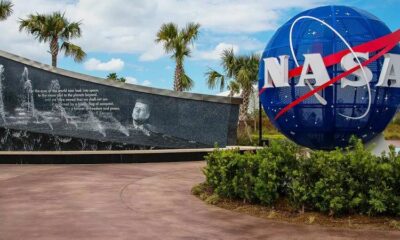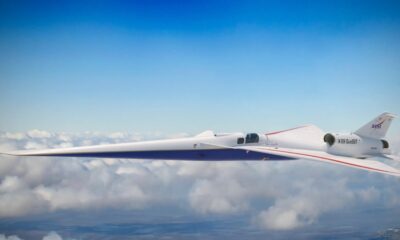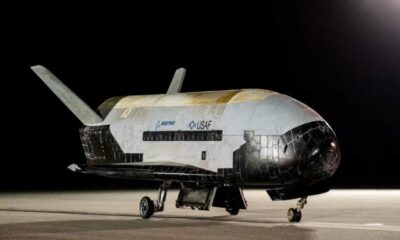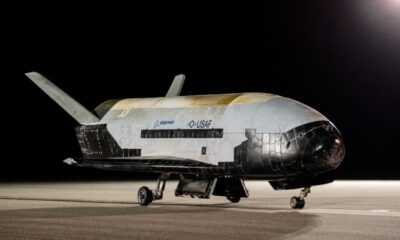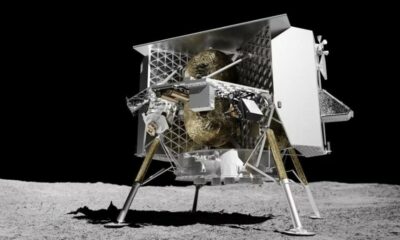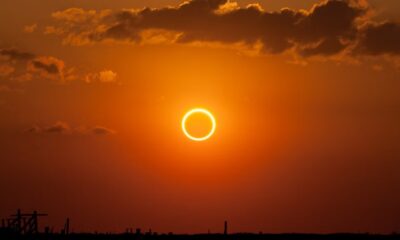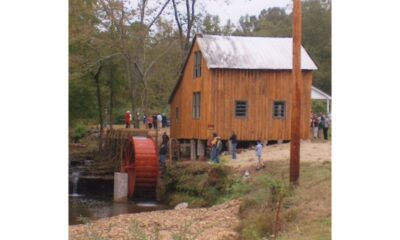Science
NASA’s Upcoming Historic Asteroid Sample Delivery
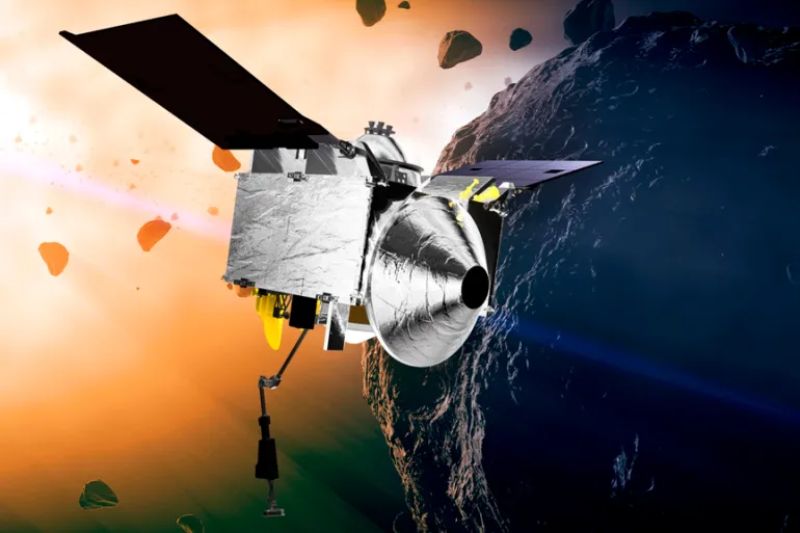
The largest asteroid sample to date will soon arrive on planet Earth as a special present.
On Sunday, a spacecraft from the United States space agency (NASA) will pass by Earth and release debris it picked up from the asteroid Bennu, capping a seven-year mission.
As its mothership, the OSIRIS-REx spacecraft, rockets off to collide with another asteroid, the sample capsule will descend into the Utah desert.
Scientists expect to collect roughly 250g (0.5 lbs) of pebbles and dust, which is significantly more than the teaspoon-sized amount that Japan brought back from two prior asteroids.
No other nation has managed to retrieve fragments of asteroids, preserved time capsules from the formation of our solar system that can shed light on the origins of Earth and life.
The 6.4 billion km (four billion miles) odyssey came to a close on Sunday with the landing, which was distinguished by the meeting with the carbon-rich asteroid Bennu, an unusual pogo-stick descent and sample grab, a jammed lid that spilled some of the treasure into space, and now the return of NASA’s first asteroid samples.
“I ask myself how many heart-pounding moments can you have in one lifetime because I feel like I might be hitting my limit,” said the University of Arizona’s Dante Lauretta, the mission’s lead scientist.
What time did OSIRIS-REx launch?
The $1 billion asteroid hunter OSIRIS-REx began its mission in 2016. It spent the following two years flying around the tiny spinning space rock and determining the ideal location to collect samples after arriving at Bennu in 2018.
Origins, Spectral Interpretation, Resource Identification, Security-Regolith Explorer (OSIRIS-REx) is the name of the spacecraft, which swooped in and reached out with its 3.35m (11-foot) stick hoover three years ago, briefly brushing the asteroid’s surface and sucking up dust and pebbles.
Rocks became impaled around the rim of the lid as a result of the device’s intense pressure and grasp. Lauretta and his colleagues raced to get the remaining material into the capsule as samples drifted away into space.
The container must be opened in order to determine the precise contents.
What do we know about Bennu, an asteroid?
Bennu, which was found in 1999, is thought to be the remains of an enormous asteroid that collided with another space rock.
It is just around 0.3 miles wide, about as tall as New York City’s Empire State Building, and its black, rocky surface is littered with stones.
Bennu rotates every four hours and has a form that is somewhat rounded like a spinning top. It orbits the sun every 14 months. Bennu is thought by scientists to have remnants from the solar system’s birth 4.5 billion years ago.
On September 24, 2182, exactly 159 years after the arrival of the asteroid’s first fragments, it may approach Earth dangerously near and strike the planet. According to Lauretta, OSIRIS-REx’s detailed examination can assist humanity in determining how to avoid Bennu if necessary.
What time will the sample be available?
The sample capsule will be released by OSIRIS-REx at a distance of 102,000 kilometres (63,000 miles), four hours before it is scheduled to land at the Utah Test and Training Range of the US Department of Defence on Sunday morning.
The control centre in Colorado for spacecraft manufacturer Lockheed Martin will provide the release command. The mother spacecraft will soon turn away and depart in order to study another asteroid.
The capsule will be hurriedly transported by helicopter to a temporary clean lab at the range after everything has been pronounced safe. The debris-filled sealed container will be flown to Houston, the location of NASA’s Johnson Space Centre, the following morning. NASA is broadcasting the touchdown live.
Where is it going to be studied?
According to NASA curator Kevin Righter, a new facility at Johnson will only work with the Bennu debris to prevent contamination of other collections.
The moon rocks that the Apollo astronauts brought back from 1969 to 1972, along with comet dust, solar wind specks and Mars meteorites discovered in Antarctica, are already housed in Building 31.
The staff will handle the asteroid samples in nitrogen-purging glove boxes while outfitted in full clean room suits. On October 11, NASA intends to make a big public announcement about Bennu’s riches.
Exist any other asteroid missions?
NASA is referring to this autumn as “Asteroid Autumn,” with three asteroid missions commemorating significant accomplishments.
On October 5, another asteroid hunter will be launched after the OSIRIS-REx touchdown. Both the NASA spacecraft and the metal asteroid that it is aiming for have the name Psyche.
After launching from Cape Canaveral, Florida, in 2021, NASA’s Lucy spacecraft will then come into contact with an asteroid for the first time a month later. On November 1, Lucy will fly through Dinkinesh in the main asteroid belt between Mars and Jupiter.
It will serve as a warm-up for Lucy’s first-ever exploration of the Trojans, swarms of asteroids that cast a shadow over Jupiter as it revolves around the sun.
Psyche and Lucy won’t be buying trinkets, and OSIRIS-REx won’t either when it heads out in 2029 to explore the asteroid Apophis.
Has NASA previously sent asteroid samples?
Including the hundreds of kilogrammes of moon rocks that the Apollo astronauts collected, this marks NASA’s third sample return from outer space.
In 2004, the agency’s first robotic sample capture came to an abrupt end. The solar wind particle-carrying capsule crashed into the Utah desert and broke, exposing its contents.
A US capsule containing comet dust landed unharmed two years later.
2010 saw the return of minuscule grains from asteroid Itokawa by Japan’s first asteroid sample mission. roughly 5g, or roughly a teaspoon, were recovered from the asteroid Ryugu during its second mission in 2020.
In the 1970s, the Soviet Union sent samples from the moon to Earth, and in 2020, China brought samples back.
-

 Business4 weeks ago
Business4 weeks agoNayef Doleh Examines International Humanitarian Fundraising Strategies
-

 Business4 weeks ago
Business4 weeks agoHow to fill MSME Form 1? Step-by-Step Guide
-

 Festivals & Events4 weeks ago
Festivals & Events4 weeks agoInteresting Facts about St. Patrick’s Day
-
Business4 weeks ago
From Marine to Chief: The Leadership Journey of Sean Mannix
-

 Gadget3 weeks ago
Gadget3 weeks agoAfter Grand Success on BLDC Ceiling Fan, Eff4 Is Launching Smart Bulb
-

 Festivals & Events3 weeks ago
Festivals & Events3 weeks agoGoogle Celebrates Cherry Blossom Season with Animated Doodle
-

 Sports4 weeks ago
Sports4 weeks agoKabaddi World Cup 2025: Full Schedule, Fixtures, Match Date, Time and More
-

 Book4 weeks ago
Book4 weeks agoNavigating Life’s Rope Bridges: Dr. Lynda’s Transformative Guide to Change

